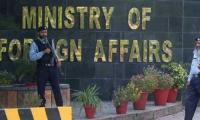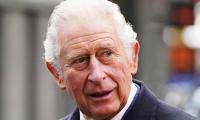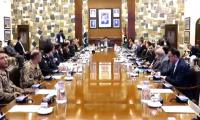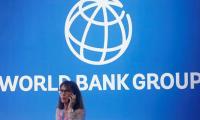KARACHI: The central bank delivered a much-awaited interest rate cut on Tuesday — the first after almost four years -- to support country’s fragile economy that now also faces threat of coronavirus, though the move failed to cheer the market which was betting on a bigger rate reduction.
The State Bank of Pakistan (SBP) said its monetary policy committee (MPC) decided to cut the policy rate by 75 basis points to 12.50 percent.
“The decision reflected the MPC’s view that the outlook for inflation has improved in light of the recent deceleration in domestic food prices, significant decline in consumer price expectations, sharp fall in global oil prices, and slowdown in external and domestic demand due to the coronavirus pandemic,” the bank said in a statement.
“Average headline inflation is expected to remain within the SBP’s 11-12 percent forecast in FY20, before falling to the medium-term target range of 5-7 somewhat earlier than previously forecast.”
The SBP said real interest rates are appropriate on a forward-looking basis to achieve the 5-7 percent medium-term inflation target. “The MPC also decided to make the interest rate corridor symmetric around the policy rate, in line with international best practices.”
The central bank cut the policy rate after May 2016. The interest rate has increased 725 basis points since January 2018.
But the 75 bsp cut was smaller than many expected, indicating uncertainty at the central bank over how serious a threat the coronavirus poses to the already struggling economy. Many analysts had predicted that the SBP would cut rate by at least 200 bsp, and they expressed dismay at the central bank’s decision.
“We badly need fiscal support for masses, consumption is going to be hit because people are now sitting home for an indefinite period, hotels are closed, airlines are going down, malls cinemas and markets are closing down, then what will we achieve to keep rate so high,” said Khurram Schezad, a senior analyst.
Naushad Chamdia, chief executive officer at Standard capital said interest rate cut is far less than the economy required. “(The SBP) has made a symbolic cut which will not go down well with businesses in the country which needs stimulus package to make things running,” Chamdia said.
Governor Reza Baqir, defending the rate cut decision, said every central bank sees its country’s economic condition. “The developed economies have much room. However, emerging markets are more careful in taking action,” he said. “We should not compare our economic environment with developed economies. We have no competition with US Fed.”
The central bank, however, also revised down its growth projection to 3 percent from 3.5 percent for the current fiscal year, while expecting a modest recovery next year “provided that the spillover impact of the coronavirus outbreak on global trade and financial markets is moderate and short-lived”.
Governor Baqir said temporary economic refinance facility has been allowed for all sectors, including exports and domestic manufacturing industries at seven percent.
“However, exporters will continue to enjoy lending under long term financing facility at six percent,” Baqir told media. “Prior Covid-19 the national economy was improving. The investors who were planning projects prior the coronavirus outbreak can reconsider to avail project financing at the lower rate.”
The SBP governor said the economic fundamentals remain strong. “The domestic economy may be beneficiary of global economic risks. There is uncertainty in the global markets,” he said. “Trade balance will have positive impact due to massive decline in international oil prices. If Pakistan faces any adverse situation the central bank is ready to take more steps.”
On outflows from Pakistani debt market, Baqir said it is not an issue of any individual country. “As the situation is deteriorating investors find safe assets, such as dollar,” he said. “There is no major impact of outflow from domestic debt securities on foreign exchange reserves of the central bank.”
Foreign exchange reserves increased to $12.76 billion as of end-February 2020 – an increase of $5.48 billion from $7.28 billion at end-June 2019. The actual improvement in the country’s external position is much larger, given the sizeable reduction in SBP’s forward liabilities of $5.20 billion during the same period.
“This increase in the net reserve buffers of SBP of $10.68 billion is more than sufficient to cope with any portfolio outflows in an orderly manner,” the SBP said. “The SBP continues to monitor developments carefully and stands ready to respond effectively to address any disorderly market conditions.”
The SBP governor said the interest rate cannot control coronavirus spread. “People are not going out due to present interest rate but there is fear of epidemic.”
The SBP said the virus outbreak has reduced external and domestic demand, while increasing risk aversion and uncertainty about the future. “At the same time global oil prices have plummeted, which, if sustained, should help lower domestic inflation and improve the current account.”
The SBP said heightened global risk aversion has recently reduced demand for emerging market assets across the world, and has led to some volatility and depreciation in the domestic foreign exchange market in the past few days, as in other emerging markets.
“The current market volatility is externally driven and the strengthening in the fundamentals of Pakistan's economy that drove the improvement in Pakistan markets before the coronavirus outbreak remains intact,” it said. “As a result, they viewed that the volatility in the domestic markets would likely subside once global risk aversion reduces and country-specific fundamentals regain importance.”
The SBP said the decline in most economic sectors was bottoming out before the coronavirus outbreak. Large-scale manufacturing rebounded strongly in December 2019, moving into positive growth (9.7 percent year-on-year) for the first time in the last six months, and indicated strengthening in a growing number of industries, especially export-oriented ones. “Notwithstanding some improvement relative to last year, agricultural growth is likely to be lower than previously forecast.” The SBP said the impact on the current account is expected to be mildly positive as the savings from low oil prices are expected to offset potential weaknesses in net exports and remittances. The current account deficit contracted 72 percent to $2.65 billion during July-January of FY2020, driven by a significant reduction in imports and modest growth in both exports and workers’ remittances.
“Pakistan’s exports have performed better in recent months than most of its competitors despite the challenging external environment,” it said. “This improvement reflected the benefits of a more competitive exchange rate, availability of low-cost funding for export-oriented sectors under the SBP’s refinancing facilities, and government efforts to facilitate businesses.”
The SBP warned that the government could face challenges in achieving revenue targets for this year, “especially if there are disruptions in economic activity, and may require increased expenditures in health and social sectors to cushion the impacts of the coronavirus pandemic”.
A representative image of footwear. — Reuters/FileLAHORE: The Pakistan Footwear Machinery & Material Show 2025,...
KARACHI: Faysal Bank Limited is set to actively support the State Bank of Pakistan’s Pakistan Financial Literacy...
Lucky Investment officials posing for photo after inauguration of their new office at the Finance and Trade Centre,...
EMB logo can be seen in EBM's Office. —Linkedin@EBM/FileKARACHI: English Biscuit Manufacturers , one of Pakistan’s...
This undated file photo shows processed gold bars. — AFP/FileKARACHI: Gold prices increased by Rs3,000 per tola on...
A cargo ship full of shipping containers is seen at the port of Oakland, as trade tensions escalate over US tariffs,...







